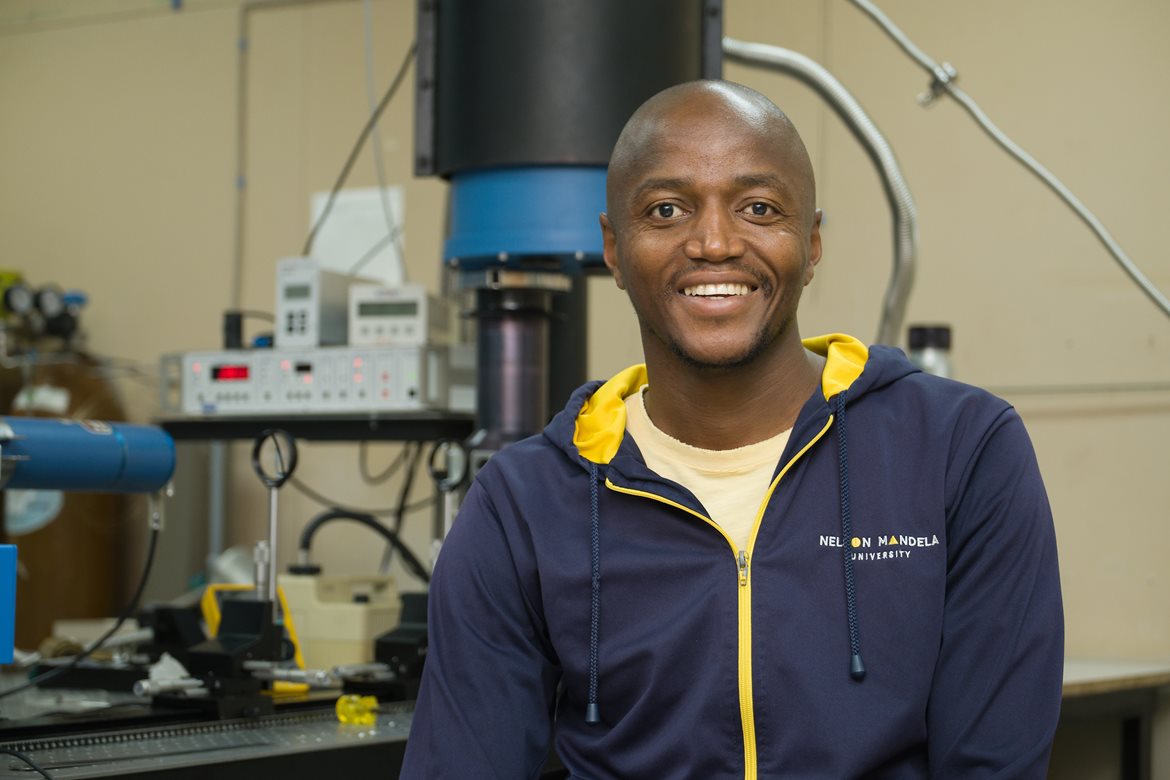Born in Mthatha and raised in Ngqeleni, the Nelson Mandela University PhD in physics graduate clawed his way through education with the help of devoted grandparents and government student grants.
His grandfather was “a very curious person”, says Tile, a postdoctoral fellow at the Gqeberha institution, and this piqued his interest in absorbing as much knowledge as he could, about everything.
Today, he works in the fields of nanophononics and semiconductor development – areas mostly mysterious and little-known among the general populace.
“The electronics industry is built on semiconductors,” says Tile. “Semiconductors make up the active portion of many electronic technologies.
“Consider your smart phones, solar panels, scanners, televisions, airport security detectors, etc. The science of manipulating, detecting, emitting and using light is known as photonics (electromagnetic radiation).
“Light may be controlled, produced and detected using semiconductors – meaning that they can be photonic devices. Everything is based on their characteristics.”
A quantum leap
Tile creates new semiconductor materials by utilising various material growth systems. This matters, because he’s researching the effects on structural properties of materials – and how this impacts performance.
"I'm primarily interested in developing device structures based on Nitrogen-doped Gallium Arsenide quantum wells and Gallium Antimonide quantum dots in a Gallium Arsenide matrix."
In layman's terms, a quantum well is a very thin semiconductor layer (a few nanometres thick) inside a thicker semiconductor, and a quantum dot is a very small semiconductor particle (nanometre-sized) inside another semiconductor.
The active layer of mid-infrared devices can integrate gallium antimonide quantum dots for use in medical diagnostics, environmental monitoring, military countermeasures, and solar cells.
This nanoscale structure's growth and management is an important scientific challenge, he explains.
“When a very thin layer of the semiconductor material, which is the quantum dot's composition, is put on another material, it creates the quantum dots that I am working on. The top thin substance then self-organises into tiny nanoscale particles because of the tension between the two layers.
“The terms ‘self-assembly’ or ‘self-organisation’ refer to this phenomenon. Quantum dots, which are semiconductor structures created in this manner, are self-organised or self-assembled. My research's primary goal is to identify the growth circumstances that cause these structures to emerge.”
Why it matters
Understanding how self-organised structures form – and creating the growth circumstances to regulate their morphology are the first and crucial elements in the development of these structures.
His high-end experiments involve a special system known as metal organic chemical vapour deposition (MOCVD), which acts as a growth method.
The research conclusions are likely to be far-reaching – they will impact industry (our smart phones, for example, are always evolving) and also contribute significantly to our knowledge of how quantum dots develop, he says.

The journey continues
Tile is a prolific academic, having written 17 peer-reviewed papers. His love of education began young, at Msolo Junior Secondary School, and while being raised by his maternal grandparents.
“Being a boy without a father is tough, because the father is the protector and guide of the family,” he says. Tile lost his father at the age of eight, but his grandfather stepped into the role, working with his teachers to foster an enthusiasm for learning.
At Walter Sisulu University, he earned a BSc in Physics and Chemistry. He then obtained his honours degree in physics from the University of the Western Cape, a MSc (Physics) from the University of KwaZulu Natal and his PhD in Physics from Nelson Mandela University.
Perseverance, says Tile, always pays off, regardless of where you’ve come from.
Written by: Phila Kula